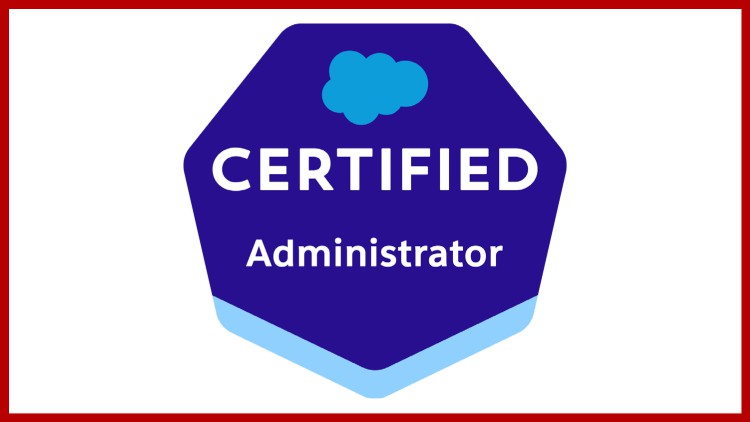
[New]Boost your Administrator career with this Practice test (SU21)
What you will learn
Configuration and Setup: 20%
Object Manager and Lightning App Builder: 20%
Sales and Marketing Applications: 12%
Service and Support Applications: 11%
Productivity and Collaboration: 7%
Data and Analytics Management: 14%
Workflow/Process Automation: 16%
Description
About the Exam
-
Content: 60 multiple-choice/multiple-select questions and 5 non-scored questions
-
Time allotted to complete the exam: 105 minutes
-
Passing score: 65%
-
Registration fee: USD 200 plus applicable taxes as required per local law
-
Retake fee: USD 100 plus applicable taxes as required per local law
Configuration and Setup: 20%
-
Describe the information found in the company settings (for example: company settings fiscal year, business hours, currency management, default settings).
-
Distinguish and understand the administration of declarative configuration of the User Interface. (for example: UI settings, app menu, list views, global actions, Lightning App Builder).
-
Given a scenario, demonstrate the proper setup and maintenance of users.
-
Explain the various organization Security Controls. (for example: Setup Audit Trail, Login Hours, Session Settings)
-
Given a user request scenario, apply the appropriate security controls based on the features and capabilities of the Salesforce sharing model. (for example: public groups, org wide default, sharing: roles, subordinates, hierarchy, report and dashboard folders)
-
Given a scenario, determine the appropriate use of a custom profile or permission set using the various profile settings and permissions.
Object Manager and Lightning App Builder: 20%
-
Describe the standard object architecture and relationship model. (for example: standard object, parent/child, master detail/lookup/junction relationships, and record types.)
-
Explain how to create, delete, and customize fields and page layouts on standard and custom objects, and know the implications of deleting fields.
-
Given a scenario, determine how to create and assign page layouts, record types and business processes for custom and standard objects.
Sales and Marketing Applications: 12%
-
Given a scenario, identify the capabilities and implications of the sales process. (for example: sales process, opportunity, path, and forecast impact.)
-
Given a scenario, apply the appropriate sales productivity features using opportunity tools. (for example: dashboards, lead scoring, Einstein opportunity scoring, and home page assistant.)
-
Describe the capabilities of lead automation tools and campaign management. (for example: leads, lead convert, lead assignment rules, campaign and campaign members.)
Service and Support Applications: 11%
-
Describe the capabilities of case management. (for example: case, case assignment rules, and queues.)
-
Given a scenario, identify how to automate case management. (for example: support process, case auto-response rules, and case escalation.)
Productivity and Collaboration: 7%
-
Describe the capabilities of activity management.
-
Describe the features of Chatter.
-
Describe the capabilities of Salesforce Mobile App.
-
Identify use cases for AppExchange applications.
Data and Analytics Management: 14%
-
Describe the considerations when importing, updating, transferring, mass deleting, exporting and backing up data.
-
Describe the capabilities and implications of data validation tools.
-
Describe the options available when creating or customizing a report or report type.
-
Describe the impact of the sharing model on reports.
-
Describe the options available when creating and modifying dashboards (e.g., dashboard components, data sources, chart types, Subscribing, running user).
Workflow/Process Automation: 16%
-
Given a scenario, identify the appropriate automation solution based on the capabilities of the tool.
-
Describe capabilities and use cases for Flow.
-
Describe capabilities and use cases for the approval process.